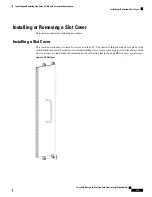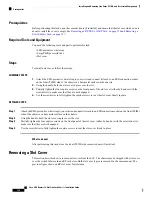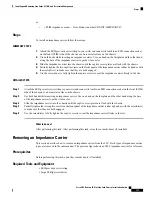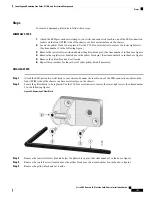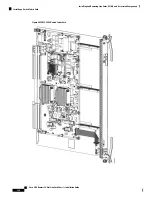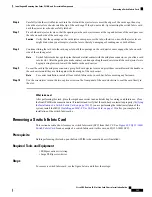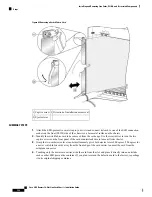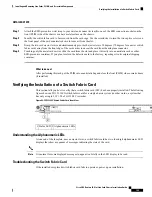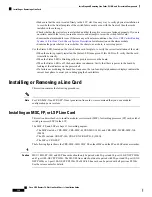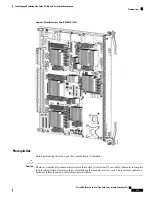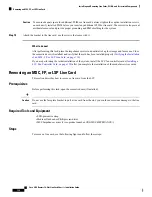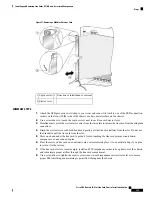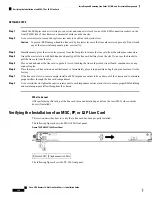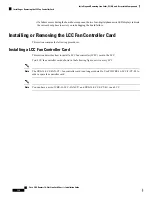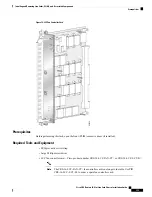
Step 6
Carefully slide the switch fabric card into the slot until the ejector levers meet the edges of the card cage, then
stop
when the ejector lever hooks catch the lip of the card cage. If they do not catch, try reinserting the switch fabric card
until the ejector lever hooks are fully latched.
Step 7
Pivot both card ejector levers so that the openings on the card ejector cams at the top and bottom of the card pass over
the tabs on each side of the card cage slot.
Verify that the openings on the card ejector cams pass over the tabs; otherwise, one or both ejector levers
might bind when you attempt to close the levers, thereby damaging or breaking one or both of them.
Caution
Step 8
Continue sliding the card into the card cage slot until the openings on the card ejector cams engage the tabs on each
side of the card cage slot.
Switch fabric cards have guide pins that make initial contact with the midplane connector as you slide a card
into its slot. After the guide pins make contact, continue pushing the card carrier until the card ejector levers
begin pivoting forward, toward the handle in the card carrier.
Note
Step 9
To seat the card in the midplane connector, grasp both card ejector levers and pivot them inward toward the handle in
the card carrier until they are flush against the front edge of the card carrier.
For easier installation, install all four switch fabric cards in each bay before securing any fasteners.
Note
Step 10
Use the screwdriver to turn the two captive screws on the front panel of the card clockwise to seat the card firmly in
the slot.
What to do next
After performing this task, place the impedance carrier in an antistatic bag for storage and future use. Close
the front (PLIM) side cosmetic doors (if installed) and verify that the card has been installed properly (
the Installation of a Switch Fabric Card, on page 129
). If you are performing the initial installation of the
system, install the MSCs (
Installing an MSC, FP, or LSP Line Card, on page 130
) after you complete the
installation of the switch fabric cards.
Removing a Switch Fabric Card
This section describes how to remove a switch fabric card (SFC) from the LCC. See
for an example of a switch fabric card (in this case, an FQ123-140G SFC).
Prerequisite
Before performing this task, open the front (PLIM) side cosmetic doors (if installed).
Required Tools and Equipment
• ESD-preventive wrist strap
• Large Phillips screwdriver
Steps
To remove a switch fabric card, see the figure below and follow these steps:
Cisco CRS Routers 16-Slot Line Card Chassis Installation Guide
127
Installing and Removing Line Cards, PLIMs, and Associated Components
Removing a Switch Fabric Card

